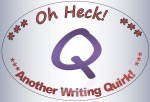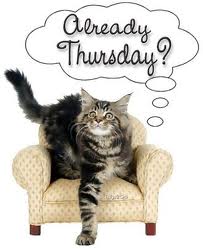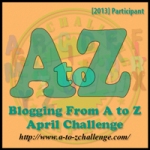Book Release: ADHD: You’ve Got My Attention!
Finally, after three years of work, Bob Ossler and I have released our book on attention deficit hyperactivity disorder or ADHD. Bob grew up with undiagnosed ADHD and struggled with learning problems, yet he succeeded as an adult despite these difficulties. ADHD: You’ve Got My Attention! recounts his problems throughout life–childhood to senior citizen–and gives suggestions for managing the difficulties ADHD presents.
Janice Hall Heck, a teacher of children with special needs for over twenty years and an elementary administrator for sixteen years, offers additional suggestions for teachers and parents.
—–

YOU–or Someone You Know- Has ADHD!
Here’s a book that will help you with your symptoms–or help you understand someone else’s struggles.
ADHD: You’ve Got My Attention! Strategies for Meeting Life’s Challenges
What’s it like to go through life with ADHD? To fail over and over again? To be criticized for poor performance or inattention to details? To wonder why you are so different from other people? To hide your feelings and pretend you’re okay?
Many books describe individuals with ADHD. They state the problems–the inattention, distractibility, impulsivity, hyperactivity, disorganization, difficulty managing time, and more. But we don’t see the resolution, the changes, the outcomes for this person. We never find out how these individuals cope or conquer their difficulties—if they do.
Bob Ossler struggled with ADHD all his life—although he didn’t know that term until later in life. He knew he was different, weird even. His red curly hair, his myriads of freckles, his sometimes inappropriate behavior, and his poor academic performance made him the brunt of vicious teasing by peers. He didn’t learn in school; he learned in spite of school. As a sophomore, he mastered chess on his own by studying Bobby Fisher Teaches Chess, a book of diagrams and strategies. Soon after, he trounced every member of the high school chess club, even when playing multiple challengers at the same time.
In class, his oral presentation skills earned him A’s; written work earned him F’s. Clearly, he was an atypical student. Nevertheless, he graduated from high school and went on to join the military where he trained first as an x-ray technician, then a psychology technician, and finally, as an emergency medical technician. After the military, he joined the Chicago Fire Department and became a paramedic/firefighter and air-sea rescue diver.
While employed full-time with the CFD, Ossler enrolled in seventeen years of part-time study to become an ordained pastor and chaplain to fulfill his desire to comfort hurting people. In 2001, he served as volunteer chaplain in New York City after the September 11th terrorist attacks. He describes his experiences at Ground Zero in his book, Triumph Over Terror.
How did Ossler manage all that when he barely scraped through high school? Ossler used his gifts. ADHD brought him difficulties with learning in a traditional setting, but it gifted him with high energy, insatiable curiosity, an incredible memory, the ability to hyper focus in high-stakes situations, a vivid imagination, a competitive spirit, a willingness to take risks, and a compassionate heart.
In his mid-thirties, by chance, Ossler heard Dr. Edward Hallowell on talk radio describing the behaviors of a person with ADD and recognized himself. He tracked down Hallowell’s book, Driven to Distraction, written with John Ratey, and read it from cover to cover multiple times. “That’s me. I have attention deficit disorder.” (Hallowell has written other books on ADHD:Delivered from Distraction and Married to Distraction.Driven to Distraction is an audio book. Listen to it on your way to work!)
Assuming the ADHD label didn’t solve Ossler’s problems, but it provided a measure of relief. He had a nameable problem; other people had this problem, too. He was not alone. Follow Bob Ossler from success on the playground to failure in school. Walk with him from kindergarten through adult learning situations. What did he think? How did he feel? How did he learn? What strategies did he discover to take himself from failure to success? Ossler shares all that in this book. (He was officially diagnosed with ADHD as an adult.)
Parents, your children may have these learning and behavior difficulties. Learn to work with them instead of battling with them. Uncover their hidden feelings of shame and failure. Help them discover their unique selves. Find their hearts and spirits and nurture them.
Teachers, you have these students in your class. Listen to Bob’s advice on how to engage them. Use non-traditional instruction to reach them. Save them from a life of failure and disappointment.
Coworkers, spouses, and significant others, identify the strengths of those with ADD/ADHD and assist them in areas of difficulties. Encourage and praise them for their successes.
Your hearts will be touched as you read this book. God bless you as you reach out to others with similar learning difficulties because of ADHD or other disability.
Click on this link for more information. ADHD: You’ve Got My Attention!
Ossler and Heck also collaborated on Triumph Over Terror, a book about Ossler’s experiences as chaplain at Ground Zero after the 9-11 terrorist attacks.








































